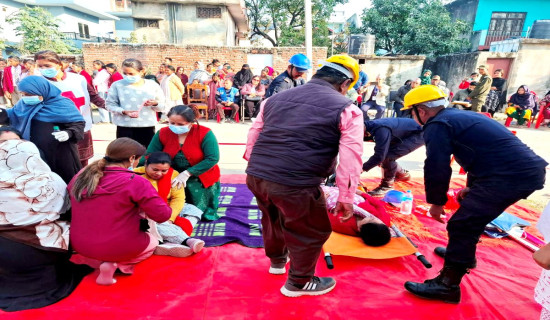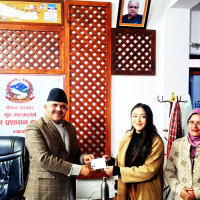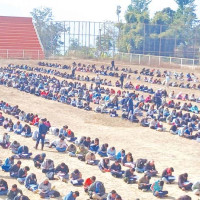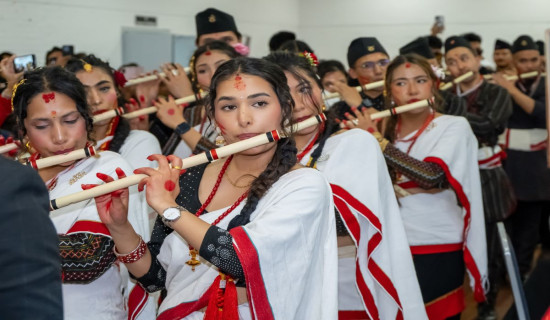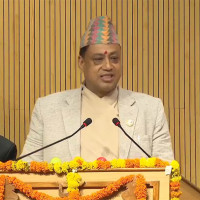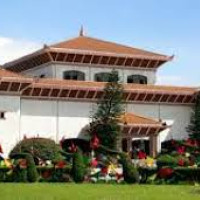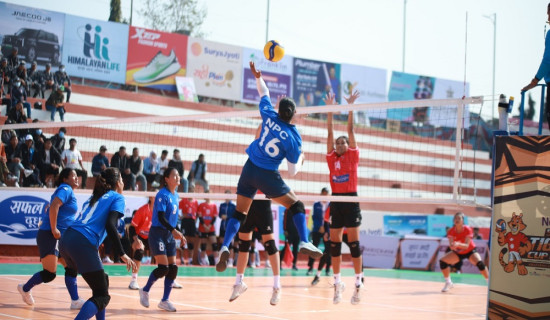- Thursday, 22 January 2026
Wetland Conservation Initiative
The quote by Henry Ford, "Coming together is a beginning; keeping together is progress; working together is success," became a reality as young people from the Valley gathered to initiate the conservation of Nepal's wetlands. SENSE Nepal, a non-profit organisation, led the event at Labim Mall, Pulchowk, Lalitpur, with support from WWF and Save the Children. SENSE Nepal aims to promote environmental conservation through research, education, and socio-environmental entrepreneurship, focusing on improving livelihoods through sustainability initiatives.
Their aims seem to be represented through the Mascot Launch, a chapter of the Save Our Wetland Campaign. The programme started with different interactive sessions and surveys. There was a question-answer session where the campaigners randomly chose the visitors in the stall and asked them about the wetlands and provided them with a chocolate pie as an incentive if they could answer the three questions correctly.
The other session was quite systematic and based on research. First, the pre-survey was done using the Kobo Collect application on mobile phones. Visitors were surveyed with different questions about wetlands, their functions, and their importance to understand their knowledge of wetlands. Afterwards, they were directed towards the next session (the Information Centre), where campaigners made them able to gather a few things about wetlands, their importance, and their present status through printed papers for visualisation and better understanding. The centre was critically focused on the wetlands near urbanising areas like Kathmandu. Finally, they were taken to the next group of campaigners, where they again post-surveyed their understanding of wetlands to understand the efficiency of the information centre and the visitors as a part of raising awareness. Through this survey, it was clear that less than 80 per cent of participants had an idea about wetlands, and almost 97 per cent of them understood more about wetlands after engaging in the information center. Looking at the significance of wetlands, more than 17 per cent of the participants understood their cultural importance too.
In the same way, there was a pledge wall divided into two categories for convenience. one with the ready-made pledge, where the visitors, if they support the commitments, have to sign just below it. Others had a blank space where the visitor could write their commitments, pledges, and thoughts. The pledge walls visualised the collective representation of the commitment and engagement of the attendees. The major objective of the pledge wall was to encourage event attendees to make personal commitments or pledges related to the event's theme or cause. One of the simple yet meaningful pledges written on the wall was “Wetland is Life Land."
Visitors took numerous photographs, making the photo frame another highlight of this campaign. The highest social media-enriched photo with likes and comments will be rewarded, as per Shreeya Manandhar, a campaign coordinator.
The centre of the event was the mascot launch. According to the Oxford Learner’s Dictionary, a mascot is a person, animal, or thing that people believe will bring them good luck, or that represents an organisation or event. The event featured the Black-tailed Godwit (Limosa limosa) as its mascot, a migratory wetland bird facing threats due to the degradation of its habitats, such as rivers, lakes, marshes and swamps. The designer of this mascot, Kevin Bajracharya, said the name of this bird includes the word "god.” It is divine and visits Nepal in the winter to take rest while returning to its homely place. The design was portrayed as a mascot with clay by the pioneer craftsman, Rajen Shrestha from Bhaktapur. The bird with a green bag grasped everyone’s eye. Nepal’s flag was designed beautifully. This simply reflects how important Nepal's wetland is for migratory birds as well. In the same way, Manoj Mali rocked the platform with his slam poetry entitled “I am a Tree." The poem is a passionate plea for the conservation of the environment, as human growth and development have resulted in its degradation. His delivery, with his expressions and gestures, grabbed the attention of the crowds and successfully connected the audience to the event's themes and goals. In a nutshell, he tried to manifest the story of a devastating stage of nature and pleaded with humans to protect nature so as to sustain their lives wiser and healthier.
Different other people and representatives were involved who were directly or indirectly working for wetland conservation, like Bird Conservation Nepal (BCN) and Small Mammals Conservation and Research Foundation (SMCRF). More than 200 visitors of different age groups, from 6 to 65 years old, visited the events. Their active participation and their enthusiasm to learn about wetland made this campaign even more fruitful. Few children were curious about this event, the bird on the frame, and, of course, the origami provided to visitors (especially children).
(Timalsina pursue higher study in Environmental Science.)



